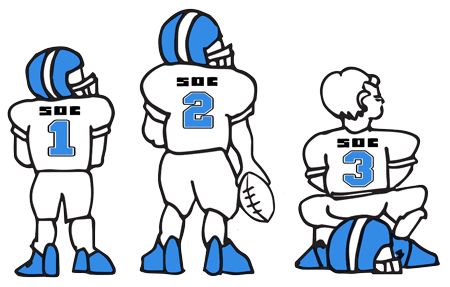ICFiles
SOC 2

Secure File Transfer Soc 2 starts at $1 per month
Understanding Depreciation Recapture
General Business News
August, 2025
Understanding Depreciation Recapture
 When it comes to businesses and asset depreciation, there are many types available, such as straight-line, units of production, double declining balance, and sum of years digits. While these aren't the only ones, they are available via the IRS code and help businesses reduce their taxable income. However, under certain circumstances, businesses have to be mindful when selling assets for a gain that could cause a tax liability through depreciation recapture.
When it comes to businesses and asset depreciation, there are many types available, such as straight-line, units of production, double declining balance, and sum of years digits. While these aren't the only ones, they are available via the IRS code and help businesses reduce their taxable income. However, under certain circumstances, businesses have to be mindful when selling assets for a gain that could cause a tax liability through depreciation recapture.
Understanding Depreciation
Depreciation is defined as the reduction in the value of an asset through wear and tear. It can be a rental property or production equipment. Investors can use depreciation to lower their taxable income. While some companies can depreciate an asset's value to $0, other companies may determine if an asset has salvage or scrap value when they sell it off to replace it with a more productive asset.
When an asset is sold off and it's sold for a gain, the Internal Revenue Service considers this depreciation recapture. The IRS makes this determination because it missed the business' taxable income that was otherwise reduced through depreciation at an earlier point in time.
When a business or investor has had possession of such assets for more than 12 months and it was depreciated to reduce taxable income, taxes may be collected if the asset is sold for a gain. It's important to note that for assets sold at a loss, depreciation recapture doesn't apply.
Assets that fall under Section 1250 and Section 1245 of the IRS Code, and what rate the asset is taxed at, depend on how the IRS classifies the asset. Section 1245 taxes filers at ordinary tax rates and applies to personal property such as manufacturing equipment and transportation vehicles. Section 1250 applies to real property such as warehouses, commercial buildings, and rental properties. Taxed at no more than 25 percent, Section 1250 depreciation recapture is indexed according to the filer's ordinary tax rate.
Calculating Depreciation Recapture
This process looks at the discrepancy between the adjusted cost basis and what the asset sells for. It's calculated as follows:
- Determine the cost paid for the asset, plus additional costs for the asset's fees
- Calculate the asset's adjusted cost basis. The section looks at both the impact of adding capital improvements to the asset, along with any potential loss accounts.
- Is there any loss or gain? Assets sold by a business for a loss, or lower than the adjusted basis, don't trigger the depreciation recapture. However, if an asset's sale results in a gain that's higher than the asset's adjusted basis, the business incurs a depreciation recapture tax obligation. It's important to distinguish timelines. For example, if it's one year or less, it's short-term. If it's for more than one year, it's long-term.
Illustrating Section 1245 Depreciation Recapture Calculation
As an example, let’s say a company bought a truck for its business needs for $50,000 and owned it for five years. After five years, the company sold it for $30,000.
Accumulated depreciation over the life of the item is $25,000. The adjusted basis is $25,000. The $30,000 sales price, minus the $25,000 adjusted basis, results in a $5,000 gain. With the accumulated depreciation of $25,000 compared to the $5,000 gain, the depreciation recapture is $5,000, which is taxed at ordinary rates.
When it comes to ensuring a business' tax compliance is adhered to, understanding how depreciation recapture works is one part of the tax code that companies need to understand fully to ensure taxes are filed accurately.
These articles are intended to provide general resources for the tax and accounting needs of small businesses and individuals. Service2Client LLC is the author, but is not engaged in rendering specific legal, accounting, financial or professional advice. Service2Client LLC makes no representation that the recommendations of Service2Client LLC will achieve any result. The NSAD has not reviewed any of the Service2Client LLC content. Readers are encouraged to contact their CPA regarding the topics in these articles.
Dynamic Content Powered by Service2client.com
SEO Content Powered by DynamicPost.net






